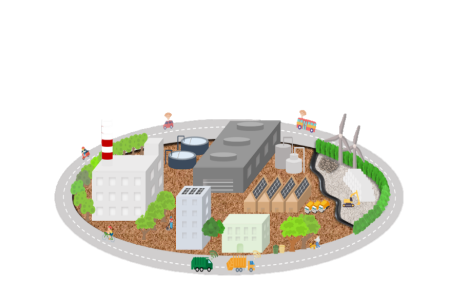- Work Development
From 1985 to 2002, Taiwan implemented the first, second, and third phases of the "Waste Management Plan" to support local governments in constructing, expanding, and improving sanitary landfills to effectively handle household waste. In the 1980s, the policy shifted to "incineration as the primary method, landfill as supplementary." In 2003, with the introduction of the "Review and Outlook on Waste Management Program," the government fully promoted the "zero waste" initiative, focusing on waste reduction and resource recycling. This policy aimed to effectively recycle resources, gradually achieving the goal of zero waste and full recycling, significantly reducing the amount of waste imported into landfills. Landfills have since been repurposed as final disposal sites for incineration ash and non-combustible waste. They also serve as temporary facilities for household waste during incinerator maintenance or natural disasters.
To improve landfill operational management nationwide, the Environmental Inspectorate (now the Environmental Management Administration) began providing comprehensive guidance on landfill operations in 2013. In 2014, efforts were intensified to manage local waste transfer stations and public coastal (or riverside) landfills. These measures established a hierarchical management system, enhancing the efficiency of landfill and transfer station operations while maintaining the quality of environmental facilities.
Landfill Management
Share to Line Share to Facebook Share to X Print Content- Landfill Management
According to Article 5 of the Waste Cleanup Act: the recycling, removal, and treatment of general waste are handled by the Environmental Protection Bureau of the special municipality in a directly governed municipality, by the Environmental Protection Bureau of the provincial-controlled municipality in a provincial-controlled municipality, and by the township (town, city) office in a county for recycling and removal, and by the County Environmental Protection Bureau for treatment. When necessary, the county may commission the township (town, city) office to carry out the treatment work. Therefore, the final disposal facility for general waste, namely the landfill, is managed and operated by the Environmental Protection Bureau in directly governed municipalities/provincial-controlled municipalities, while in counties, the landfill sites are mostly managed by the township offices in the areas where the landfills are located, under the supervision of the County Environmental Protection Bureau.
Environmental Management Administration (EMA) is responsible for counseling and improving the operational efficiency of landfill sites nationwide. Since 2013, comprehensive audits have been conducted on public landfill sites in operation, and the three-level inspection system has been implemented to ensure responsible management. Audits and supervision are conducted to enhance the operational efficiency of landfills and transfer stations, and to ensure the quality of environmental facilities.
The three-level inspection system is divided into three hierarchical units: waste management facilities management units, county/city environmental protection bureaus, and the Environmental Management Administration (EMA).
(1) - Level 1:
Managed by public landfill and waste transfer station management units (entrusted and supervised by township/city governments), they carry out Level 1 self-inspections. They regularly conduct independent inspections of the facilities they manage, assessing their condition and operational status.
(2) - Level 2:
Managed by county/city environmental protection bureaus, they conduct Level 2 inspections for public landfills and waste transfer stations within their jurisdiction. They review the performance of the Level 1 inspections conducted by the facility management units and assess the operational status of the facilities.
(3) - Level 3:
The Environmental Management Administration, together with the environmental protection bureaus and facility management units, conducts Level 3 audits on-site. They audit the operational status of waste treatment facilities and assess the progress made in addressing any deficiencies.
- Level 1:
- Landfill Transformation:
Appropriate planning is carried out for the transformation of landfills into multifunctional temporary sorting sites. This facilitates recycling and enhances subsequent land use options. The transformed sites can be used for general waste disposal, bulky waste, waste sorting, compression, and packaging, as well as resource recycling. This efficient utilization of landfill space helps prevent pollution.

- Source:
- Ministry of Environment
- Published:
- 2025-03-13
- Updated:
- 2025-03-13
